Minzey’s Maze:
The Criminal Mind and the State of Michigan:
Exclusive Interview with Homicide Detective & Legendary Profiler DAVE MINZEY
By: Ryan M. Place
Detective First Lieutenant Dave Minzey is the Michigan law enforcement community’s ace in the hole you’ve never heard of. But you should know him. He deserves greater recognition for his tireless service.
This man has been shot, stabbed repeatedly with a pairing knife by a Mexican lady, bitten by a guard dog, suffered wound-to-wound blood exchange with AIDS patient and finally, was in a terrible car accident that required four surgeries to get all the tiny micro shards of broken glass out of his eyeballs.
He has tracked down serial killers, sexual sadists, child molesters and more. Yes, Minzey is the boots-on-the-ground take no guff jack of all trades who exudes a hypnotically calm demeanor. He’s an excellent listener and observer, always silently processing and analyzing things.
Born 1954 in Ypsilanti, Michigan, Dave moved around and grew up in Milford and Flint, before moving back to Ypsi in 8th grade, “I was in the same grade and class as murder victim Dawn Basom at West Junior High in April 1969. Her death really opened my eyes and the whole community’s eyes to the need for strong law enforcement”, he says, “Ypsi is a rare and interesting slice of America. Half the city is hard-working blue collar families and the other half is academia, anchored by Eastern Michigan University. EMU is a great school for working people to send their kids to college. There’s occasional tension between townies and students but overall the university and the town mesh well together.”
Minzey graduated from Ypsilanti High School in 1973 and enrolled at EMU. “My Father, Mother, two brothers, and sister all went to EMU. My father Jack Minzey got his B.A. 1950 when it was Michigan State Normal College, got his M.A. at UofM and PhD at MSU in educational leadership, then returned to teach education at EMU for 25 years from 1967-1992. We have a rich history there.”
Dave himself received his B.S. in Political Science 1978 and M.A. in Educational Leadership 1989 at EMU. “In the early 70’s, I applied to the EMU Campus Police Department, became a Dispatcher, then enrolled and completed the Wayne County Police Academy at Schoolcraft College in Livonia. I had the unique opportunity to work as a police officer while still attending EMU. This experience was invaluable and also exposed me to the police culture surrounding the University and its relationship to Ypsi.”
For over 20 years, from 1978-2001, Minzey served in the Michigan State Police as a Trooper, Detective Sergeant, Detective Lieutenant and Detective First Lieutenant. “Every enlisted member of the State Police starts out as a trooper working the road. If you survive recruit school and graduate, you are assigned to a Post. I was sent to the Niles Post. A busy post covering two counties, Niles is on the state line, just north of South Bend, Indiana. Interestingly, Niles was a favorite destination of Chicago gangsters in the roaring 1920’s who flocked to the dance halls around Barron Lake.”
Minzey was promoted to Detective Sergeant and assigned to the Fourth District in Jackson. In addition to handling cases at the largest walled prison in the world, Minzey handled numerous major regional cases before joining the Violent Crime Unit in East Lansing. “This Unit has statewide responsibility for the violent crime effort in Michigan. My role there was to be the Chief Criminal Personality Profiler for the State. I was later promoted to Det. Lt. and commander of the Violent Crime Unit. Then in 1997 I was promoted to Detective First Lieutenant, in charge of the Investigative Resources Section, which included the Violent Crimes Unit, the Criminal Intelligence Unit and the Investigative Training Unit.”
Created in 1917 and reorganized in 1935, the Michigan State Police was the first department in America to install two-way radios inside squad cars in 1934. “MSP began criminal personality profiling back in the late ‘50s. When most Departments and the FBI were compiling fingerprint information as the most effective manner of identifying criminals, we were collecting behavioral data on sexually motivated crimes. By law every police agency in Michigan was required to report any sex crime to the MSP on special forms. Considering the lack of computerization at the time, collecting and analyzing this info ‘by hand’ amazes me. It was way ahead of the curve!” MSP currently has 1100 enlisted personnel spread throughout 22 state police posts. The largest are Detroit’s two mega-posts: Metro North on 10 Mile in Oak Park and Metro South on Telegraph in Taylor.
The Michigan State Police chain of command goes: Trooper, Sergeant, 2nd Lieutenant, 1st Lieutenant, Inspector/Captain, Lieutenant Colonel and at the top, Colonel. There are 3 main units in the IRS (Investigative Resource Section): Violent Crimes, Criminal Intelligence and Investigative Training. “Criminal Intelligence is our largest unit, they gather intel. I was personally team leader of roughly 20 officers in the Violent Crimes unit. We handle child abuse (physical & sexual), rape, serial sexual assaults, homicides, domestic assaults, elderly abuse, etc.”
Involved in over 10,000 violent crime cases throughout his career, Minzey says “I’m a ‘utility player’. I fill in wherever help is needed. My work has taken me to Canada, Mexico, half the states in the United States and I have thoroughly enjoyed my entire career, especially being a field detective. I often command the team, more in a consultant capacity these days, and remain a strong advocate of the team approach.”
Det. Minzey has maintained a roughly 85-90% accuracy rate on the suspect profiles he has created throughout his career. “We call it ‘Stump the Wizard’. I’m usually called in to create a suspect profile after there’s been a huge investigation and they’ve run into a dead end.”
Four high-profile cases stand out in Det. Minzey’s experience:
1.) Donald Gene Miller = “In the 1990’s, we looked again at the 1978 Donnie Miller case from East Lansing. Donnie was killing women who resembled his dolls and my job was to keep the detectives on track with the kind of suspect they were looking for. It worked.”
2.) The Great ‘Satanic Panic of the 1980’s = “The MSP Violent Crimes Taskforce was investigating Satanic Cults in the 1980’s after widespread claims of abuse cropped up all at once. I traveled the country as part of an elite team investigating these claims and we were able to conclusively prove that every single claim we encountered was a fabrication and did not happen in actuality. Some therapists claimed to be survivors and some helped ‘recall memories’ in some of their clients. Usually people with emotional problems, target the suggestible. They convince a woman into thinking that when she was 12, she had a baby that was sacrificed. Patients in focus groups were creating “memories” in each other in order to deal with horrible past traumas. It was a case of the news media trying to scare the public. Many of these people did have something terrible happen to them in the past but nothing Satanic.”
3.) The Woodward Corridor serial killer = “In 1991-1992, there were several prostitutes being brutally murdered along Woodward Avenue in the city of Highland Park inside Detroit. We had 3 victims in 3 separate hotel rooms, rooms used by homeless, crack addicts, hookers. They were just dead prostitutes until victim 7, victim 8, victim 9, etc. This case was particularly difficult because you have extremely high-risk victims in extremely high-risk areas, hooking for drugs (usually crack cocaine) and going with whomever. In the end, my profile of the killer, Benjamin Atkins, was accurate. He was a local from Highland Park, drug addict, his Mother was a prostitute in Detroit who used to take him along and turn tricks in the backseat of her car with him watching from the front seat. It was terrible. I remember I got the Mayor’s Medal for assisting the Highland Park Police Department in his apprehension. The local citizens had a buffet of homemade food out of appreciation for our efforts. It’s was very touching.”
4.) U.S. Navy serial killer John Eric Armstrong = “Around 1999-2000, we found a body dump of prostitutes along the John Kronk railroad tracks on Detroit’s Southwest side. All the women had the same M.O. of being strangled and were found in a tight clearly defined body drop zone. Turns out the killer was a big burly guy from Dearborn Heights named John Eric Armstrong who was in the Navy. Armstrong claims he killed women at every port of call while traveling the world aboard the USS Nimitz aircraft carrier out of Seattle.”
Minzey explains the difficulty of being called to investigate a case and creating a profile of the suspected murderer, “The brain is hard-wired. You can’t magically inject a conscience into a serial killer or serial pedophile. The most difficult cases of all are those violent offenders who can blend into society, the chameleons among us. We oftentimes associate bad acts with someone who must look bad, who must physically look the part of the maniac. That’s why when you look at old cold cases like the 1969 John Norman Collins case, you can’t critique the agencies working at that time on today’s standards, it’s not fair. They hadn’t developed the proper protocol for serial homicide investigation. But they led the way”
Early childhood seems to play a major part in the creation of psychopathic or sociopathic people, he says. “The most important time in a person’s development is between birth and kindergarten. This is when you learn what is good and bad, right and wrong. Much of this responsibility falls on the shoulders of our mothers. When she gives you love, you feel good. When she denies you love, you feel bad. In many murderers and rapists, that connexion was never made and they never developed a conscience. What they do come to understand is power and control. They learn what makes them feel good: power.”
When asked about sexually motivated crimes, Minzey says “Sexual behavior requires aggressive behavior. Just watch the Animal Planet! There is an interesting psychological theory referred to as ‘drive-fusion’. It’s the belief that our sex drive must become connected, or ‘fused’, with an aggressive drive. This takes place in most people. In some individuals however, their sex drive becomes ‘fused’ with a violent drive and their sexual pleasure is thus derived from domination and inflicting pain. To become sexually satisfied these individuals must become violent. This behavior might not even include normal sexual behavior, such as intercourse. Penetrating a victim with a knife may provide the same pleasure.”
Since retiring, Minzey has stayed involved in the violent crime world. He continues to profile cases, some over 30 years old. Most of the requests he receives are cold cases of old homicides. The process of profiling or ‘behavioral assessment’ as Minzey refers to it, is not easy. “The television portrayal is quite misleading and these cases pose numerous challenges. Individuals critical to the cases may have passed away, witness memories often fade, reports, evidence and case notes may be lost and what reports remain may be voluminous, cabinets full. I often measure these cases by the pound!” He not only serves the entire Michigan law enforcement community but he’s also proud of the fact that he has never refused a request.
Having taught violent crimes investigation at the college level quite a bit, Dave currently teaches other Investigators & Detectives. “You become a cop, do well on the Sergeant’s test and become a Detective, that’s it. You learn your job by doing. I personally honed my skills first as a trooper handling countless B&E’s, larceny, assault, etc.”
Dave has an aptitude for criminal investigation, behavioral & content analysis and accident reconstruction of fatal crashes, some of which can take 2-3 days to fully reconstruct. But his real passion is teaching. “My ultimate goal is I’m in the process of creating a comprehensive broad-based training program on violent crimes and course guidebook for field investigators, primarily detectives, at the State Level and if all goes well, will replicate this model on a nationwide scale. We’re constantly cutting back on personnel and need to be more efficient with what resources we have and there’s no greater resource than our informed hard-working men and women. Criminal Investigation is handled almost exclusively by Detectives. These Detectives could be far more effective with ample preparation via the benefits of sharing. Understanding the value of pre-prep is a critical component of our leadership focus.”
In summing up his career, Minzey states “Although I was seriously and permanently injured in the line of duty, I have absolutely no regrets. I have been a part of numerous big investigations, several serial crimes and several high-profile cases that received national media coverage. There were also thousands of investigations that virtually went unnoticed, except perhaps by a 70 year old mother who had been waiting years for someone to answer for the murder of her child. I hope I made a difference.”
Det. Minzey is currently wrapping up his Doctorate in Educational Leadership at Western Michigan University and hopes to do more teaching in the future. “In life there are Architects and Builders and the architects are not always the builders. I’d like to be as effective as I can and be both.”

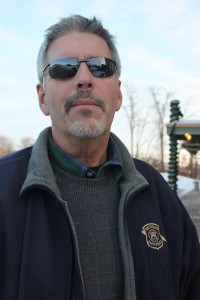



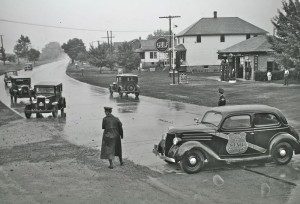
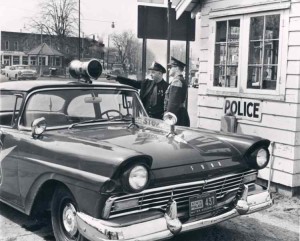


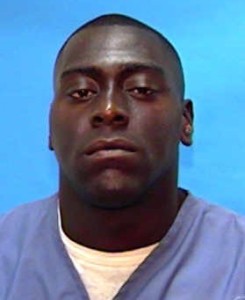
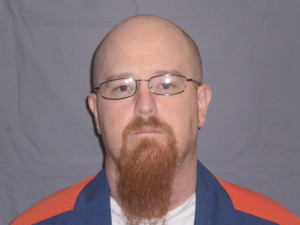


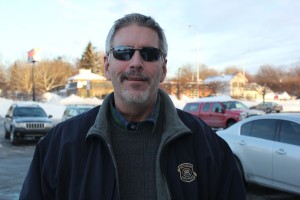
I’d love to see D. Minzey in regard to the Leiterman case. Particularly in regards to the parallels of Collns’ MO as presented in Catching Serial Killers by E. James.